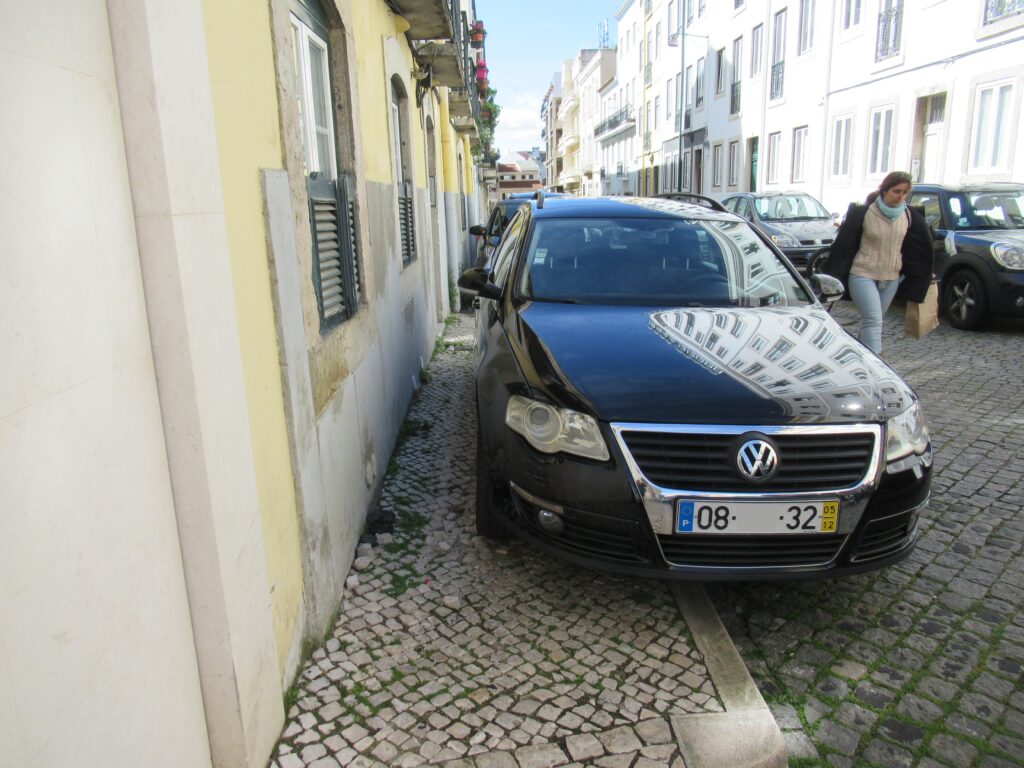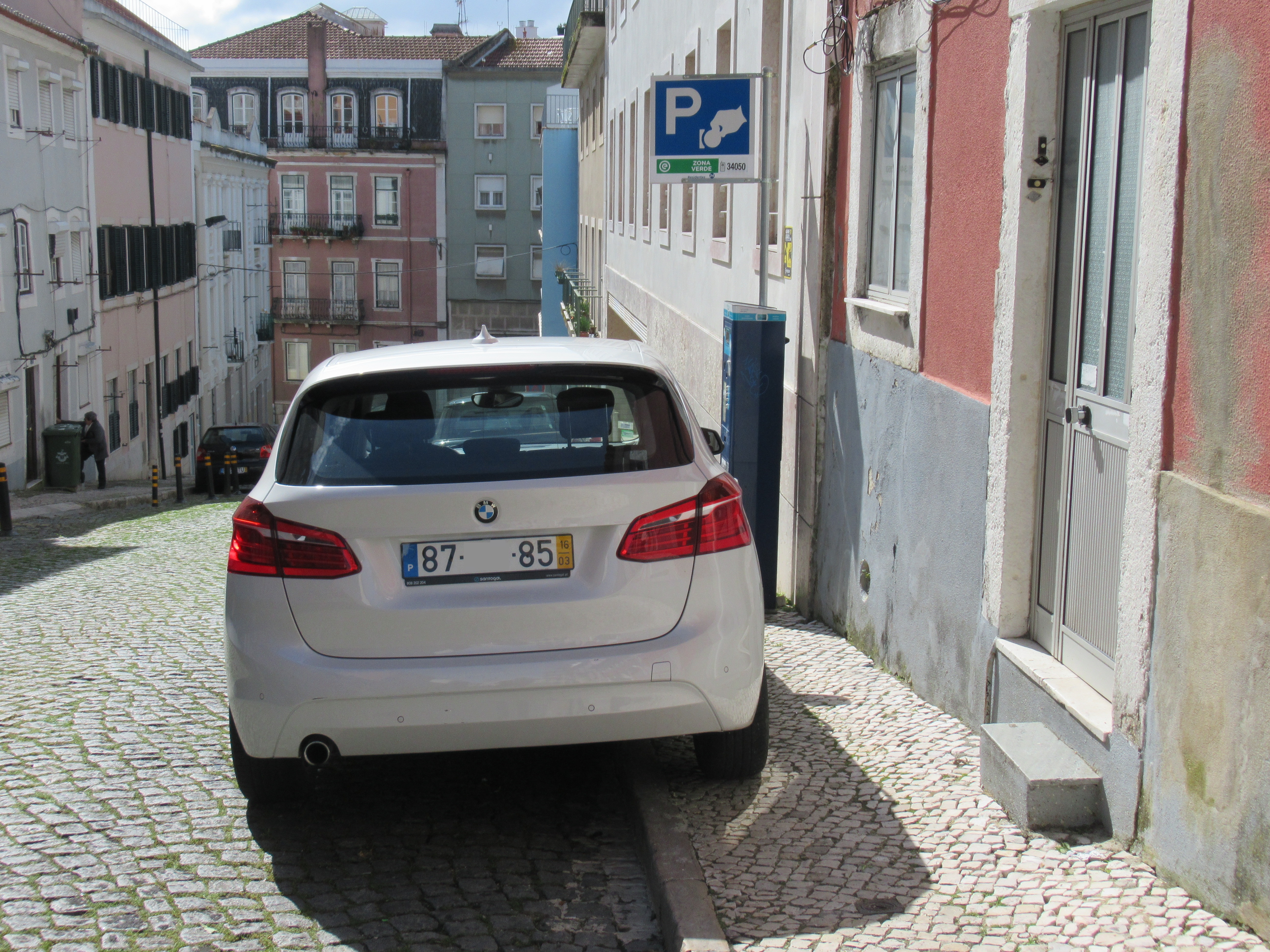Cars parked on footways is a feature of many cities. I’ve seen this in many cities in Europe, especially in the East and South.
But I guess there are few cities in Europe with a higher density of cars on footways than Lisbon. This happens mostly in streets far away from where tourists go, so it’s not regarded as a big policy problem. Except for people who need to walk, of course. This site collects pictures of cars parked on pavements in Portugal, mainly in Lisbon. It’s in Portuguese but you can see a lot of horrendous photos.
I took the photos in this post during a recent trip. I had to remove part of the plate numbers because it was uncomfortable enough being asked by aggressive (and always male) drivers why I was taking photos of their cars.

In Lisbon this happens a lot in areas where footways are already narrow, because strreets are also narrow. So pedestrians are forced to walk on the road.
This kind of unsocial behaviour is unfair for older people, children and people with visual impairments or restricted mobility. If their whole neighbourhood is like this (and many neighbourhoods in Lisbon are like that) they may fear going out, and do so less often than they would like to, missing on seeing friends and doing other things that they need to do to have a healthy life.

Cars on footways do not restrict only the mobility of pedestrians. They may also block traffic and cause delays to other users, especially in narrow streets. In the case of Lisbon, cars on footways often block trams and hold cars and buses behind them.
Parking on footways is illegal. So one solution to the problem is more enforcement, fining car users doing this. Obviously, this is not being done in Lisbon, as whole streets are permanently filled with cars on footways.
A more “elegant” solution (not) is to make parking on footways legal, reconverting the footway as a parking space, as below. Problem “solved”.

If cars are permanently parked on footways, it means that demand for parking is far greater than supply of parking spaces. This begs the question: why is demand so high, in relatively central areas, where many buidings do not have garages or parking areas? Could it be lack of good public transport? Or is it because people are so attached to cars that they feel the need to have one even when living in areas where it is not feasible to have it? (Unless they park on footways).
Lisbon is just an example. In many parts of the world (South and South East Asia, Africa), footways do not even exist as a concept. The part of the street next to building frontages is not recognized a space exclusive to pedestrians. It’s space to park motorbikes or cars or for shopfront displays. I will write about this in other posts.